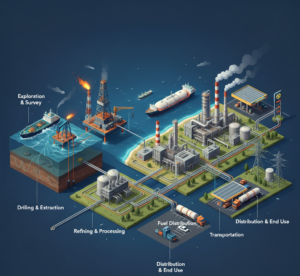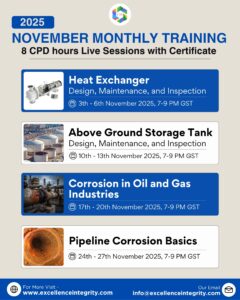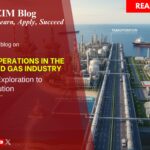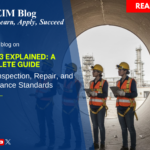
Key Operations in the Oil and Gas Industry: From Exploration to Distribution
The oil and gas industry plays a crucial role in powering the global economy. From fueling vehicles to generating electricity and producing petrochemical products, oil and gas remain essential energy resources. Behind every drop of fuel that reaches consumers lies a complex and highly coordinated process — known as the key operations of the oil and gas industry.
In this blog, we’ll explore the main stages of oil and gas operations, their significance, emerging technologies, and how companies are adopting sustainable and digital solutions to improve efficiency, safety, and environmental performance.
1. Overview of Oil and Gas Operations
The oil and gas sector operates through three primary stages:
- Upstream: Exploration and production (E&P)
- Midstream: Transportation and storage
- Downstream: Refining, distribution, and marketing
Each stage involves specialized techniques, advanced technologies, and stringent safety and environmental standards.
2. Upstream Operations: Exploration and Production
The upstream sector is the first and most technically challenging phase. It focuses on finding and extracting crude oil and natural gas from the earth.
a. Exploration
Exploration begins with geological and geophysical studies to identify potential oil and gas reservoirs.
- Seismic surveys use sound waves to map subsurface structures.
- Geochemical analysis helps determine hydrocarbon presence.
- Exploratory drilling confirms whether the site is commercially viable.
Key Technologies:
- 3D and 4D seismic imaging
- AI-driven reservoir modeling
- Satellite data interpretation
Keywords: oil exploration, reservoir mapping, seismic survey, hydrocarbon detection
b. Drilling Operations
Once a potential site is confirmed, drilling operations begin. Engineers design and execute wells to safely reach the hydrocarbon-bearing formations.
Types of drilling:
- Onshore drilling – conducted on land.
- Offshore drilling – carried out in oceanic environments, using rigs or floating platforms.
Key Steps:
- Site preparation and rig setup
- Directional or horizontal drilling
- Casing and cementing the well
- Well logging and testing
Keywords: drilling operations, offshore rigs, well completion, oilfield services
c. Production and Extraction
After successful drilling, the well begins producing oil or gas. Production engineers manage flow rates, pressure, and safety systems to ensure optimal output.
Enhanced Oil Recovery (EOR) techniques like gas injection, steam flooding, and chemical treatments are used to maximize yield.
Keywords: production optimization, well monitoring, enhanced oil recovery, reservoir management
3. Midstream Operations: Transportation and Storage
The midstream sector connects producers to refiners and markets. It involves transporting, processing, and storing raw hydrocarbons safely and efficiently.
a. Transportation
Hydrocarbons are transported through:
- Pipelines – the most cost-effective and safe method for crude oil and gas.
- Tankers and barges – used for international or offshore transport.
- Rail and truck fleets – for regional or emergency deliveries.
Midstream companies ensure pipeline integrity, leak detection, and flow assurance through advanced digital monitoring systems.
Keywords: pipeline transportation, oil logistics, LNG shipping, pipeline integrity management
b. Storage
Before refining or market distribution, oil and gas are stored in:
- Crude oil storage tanks
- Underground gas storage reservoirs
- Liquefied Natural Gas (LNG) terminals
Proper storage management helps stabilize supply-demand fluctuations and ensures operational safety.
Keywords: oil storage, LNG terminals, tank inspection, energy logistics
4. Downstream Operations: Refining and Marketing
The downstream sector refines crude oil and natural gas into usable products and delivers them to consumers.
a. Refining Process
Refineries transform crude oil into valuable products like:
- Gasoline
- Diesel
- Jet fuel
- Lubricants
- Petrochemical feedstocks (ethylene, propylene)
Key Refining Operations:
- Distillation: Separating components based on boiling points.
- Cracking: Breaking large hydrocarbon molecules into smaller ones.
- Reforming: Enhancing fuel quality and octane number.
- Hydrotreating: Removing sulfur and impurities.
Keywords: refinery process, distillation unit, petrochemical refining, hydrocracking
b. Product Distribution and Marketing
Refined products are distributed through pipelines, tankers, trucks, and retail outlets.
Oil marketing companies handle branding, pricing, retail management, and customer engagement through fuel stations and distribution networks.
Keywords: fuel distribution, retail fuel marketing, petroleum logistics
5. Supporting Services in Oil and Gas Operations
Behind these main operations lies a vast network of supporting services that ensure smooth, safe, and profitable functioning:
- Inspection and Maintenance: Ensuring asset integrity and equipment reliability.
- Health, Safety, and Environment (HSE): Managing risks, preventing accidents, and maintaining compliance.
- Data Management and Analytics: Leveraging IoT and AI for predictive maintenance and decision-making.
- Training and Workforce Development: Building skills to operate safely and efficiently.
Keywords: asset integrity management, oilfield safety, predictive maintenance, digital transformation in oil and gas
6. Emerging Trends Transforming Oil and Gas Operations
The industry is undergoing a digital and sustainable transformation driven by environmental regulations, innovation, and the need for efficiency.
a. Digitalization and Automation
Technologies like AI, IoT, digital twins, and drones are revolutionizing field operations and safety monitoring.
- Digital Twins: Enable real-time simulation and predictive analysis.
- IoT Sensors: Provide continuous monitoring of equipment health.
- Automation and Robotics: Reduce human risk in high-hazard areas.
Keywords: oil and gas digital transformation, IoT in oilfields, digital twin technology
b. Energy Transition and Sustainability
The shift toward cleaner energy sources is reshaping operations:
- Integrating carbon capture and storage (CCS) systems.
- Using renewable-powered rigs and green hydrogen.
- Reducing flaring and methane emissions.
Oil and gas companies are aligning with Net Zero goals by investing in sustainable production and renewable integration.
Keywords: carbon capture, energy transition, green hydrogen, sustainable oil operations
c. Safety and Regulatory Compliance
Modern operations prioritize process safety, risk-based inspections (RBI), and regulatory adherence to minimize accidents and protect workers and the environment.
Keywords: safety compliance, risk-based inspection, process safety management
7. Future Outlook of Oil and Gas Operations
As the world moves toward renewable energy, the oil and gas industry continues to evolve through innovation and adaptation. Smart technologies, automation, and cleaner processes are shaping a future where hydrocarbons coexist with sustainable energy systems.
- AI-driven exploration improves discovery success rates.
- Digital refineries optimize performance and energy efficiency.
- Green fuels and bio-based alternatives enhance sustainability.
The focus is on achieving operational excellence, cost efficiency, and environmental stewardship.
Conclusion
The key operations in the oil and gas industry — exploration, drilling, transportation, refining, and distribution — form the backbone of global energy supply. As the industry navigates challenges like energy transition, geopolitical shifts, and environmental concerns, embracing innovation and sustainability becomes vital for long-term growth.
By integrating digital technologies, safety excellence, and eco-friendly practices, the oil and gas industry continues to power the world responsibly — transforming raw hydrocarbons into energy that drives progress, mobility, and development.






